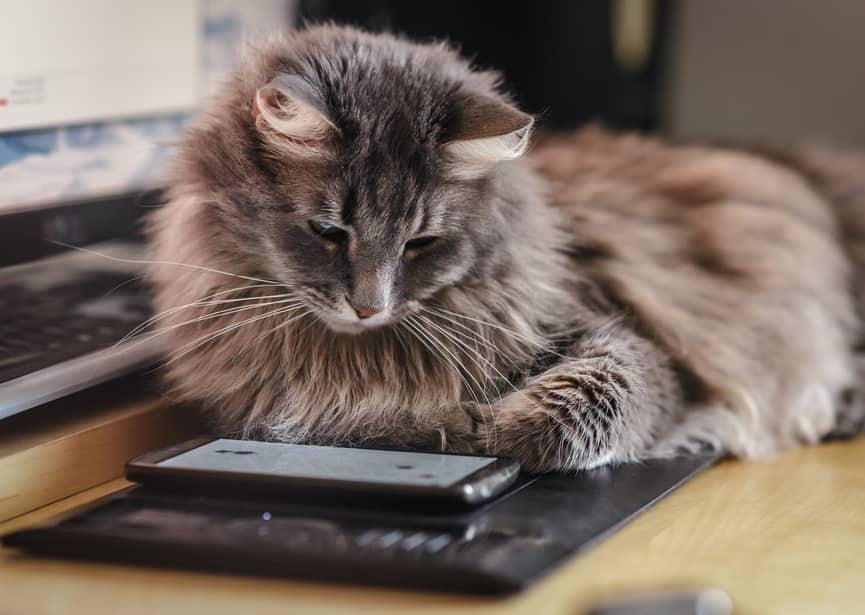
-
Find the right food for your petTake this quiz to see which food may be the best for your furry friend.Find the right food for your petTake this quiz to see which food may be the best for your furry friend.Featured products
 Perfect Digestion Small & Mini Adult Dog Food
Perfect Digestion Small & Mini Adult Dog FoodHill's Science Plan Perfect Digestion Small & Mini Adult Dog Food with Turkey is a complete premium pet food for small breed adult dogs aged 1–6 years. This deliciously smooth mousse is precisely balanced to deliver the appropriate amount of energy and to support digestive health in adult, small breed dogs.
Shop Now Sensitive Stomach & Skin Dog Food
Sensitive Stomach & Skin Dog FoodHill's Science Plan Sensitive Stomach & Skin Adult Wet Dog Food with Chicken is a complete premium dog food for adult dogs from 1 year. This savoury tinned loaf is enriched with ingredients that support digestive health & skin care.
Shop Now Perfect Weight Small & Mini Adult Dog Food
Perfect Weight Small & Mini Adult Dog FoodHill's Science Plan Adult Small & Mini Dog Food with Turkey is a complete premium pet food for adult small dogs from 1 year old that are prone to weight gain or slightly overweight. This deliciously smooth mousse is formulated to deliver the appropriate amount of energy to support weight maintenance in adult dogs.
Shop NowFeatured products Mature Adult Wet Cat Food with Chicken
Mature Adult Wet Cat Food with Chicken
Tender chicken chunks in gravy for mature adult cats. Made with easy-to-digest ingredients, high-quality protein for lean muscle maintenance and antioxidant vitamins C+E for optimal health.
Shop Now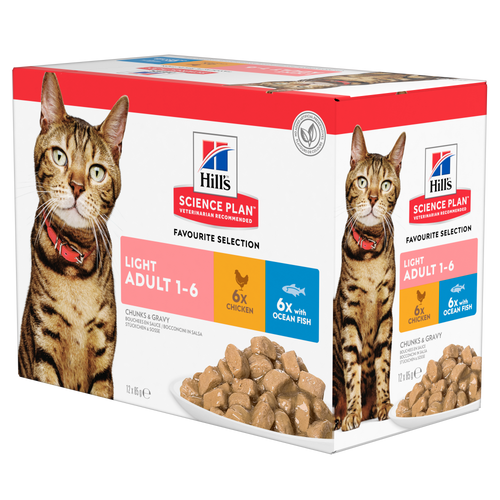 Light Adult Multipack Wet Cat Food with Chicken & Ocean Fish
Light Adult Multipack Wet Cat Food with Chicken & Ocean FishTender chicken chunks in gravy for cats, with L-carnitine and fewer calories for ideal weight management. Packed with high-quality protein, omega-6s, and vitamin E for shiny fur and healthy skin.
Shop Now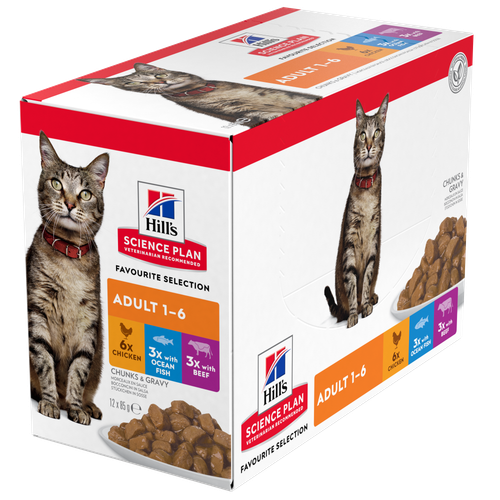 Adult Multipack Wet Cat Food with Beef, Ocean Fish & Chicken
Adult Multipack Wet Cat Food with Beef, Ocean Fish & ChickenTender chunks in gravy for cats, with high-quality protein to maintain lean muscle. With vitamin E and omega-3s & -6s for healthy skin and balanced minerals to support healthy vital organs.
Shop Now -
Dog
- Dog Tips & Articles
-
Health Category
- Weight
- Food & Environmental Sensitivities
- Urinary
- Digestive
- Joint
- Kidney
-
Life Stage
- Puppy Nutrition
- Adult Nutrition
- Senior Nutrition
Cat- Cat Tips & Articles
-
Health Category
- Weight
- Skin & Food Sensitivities
- Urinary
- Digestive
- Kidney
-
Life Stage
- Kitten Nutrition
- Adult Nutrition
Featured articles An Owner's Guide To Safe Water Sources For Pets
An Owner's Guide To Safe Water Sources For PetsEnsure your pet's hydration with our owner's guide to safe water sources for pets. For detailed tips on maintaining your pet's health, visit Hill's Pet UK.
Read More Tips For Mixing Wet And Dry Pet Food
Tips For Mixing Wet And Dry Pet FoodDiscover tips for mixing wet and dry pet food to ensure balanced nutrition and variety for your pet. For comprehensive feeding advice, visit Hill's Pet UK.
Read More Virtual Vet Visits: What You Need to Know
Virtual Vet Visits: What You Need to KnowLearn the ins and outs of a televet appointment before you talk to a vet online.
Read More -


Playtime with your feline friend is one of the great joys of being a pet parent. There are so many fun things to do with your cat and cool new cat trends to follow. But what if your cat is bored with catnip mice and jingly balls?
As Blue Cross explains, play is essential for cats. It helps kittens to develop coordination and social skills, and it also gives cats the opportunity to express their predatory instincts. It’s also important for relieving boredom, keeping cats mentally and physically stimulated, and providing exercise. And it’s also a wonderful bonding experience for you and feline friend!
Here are 10 fun games to play with your cat, from low-tech activities to high-tech new cat trends.
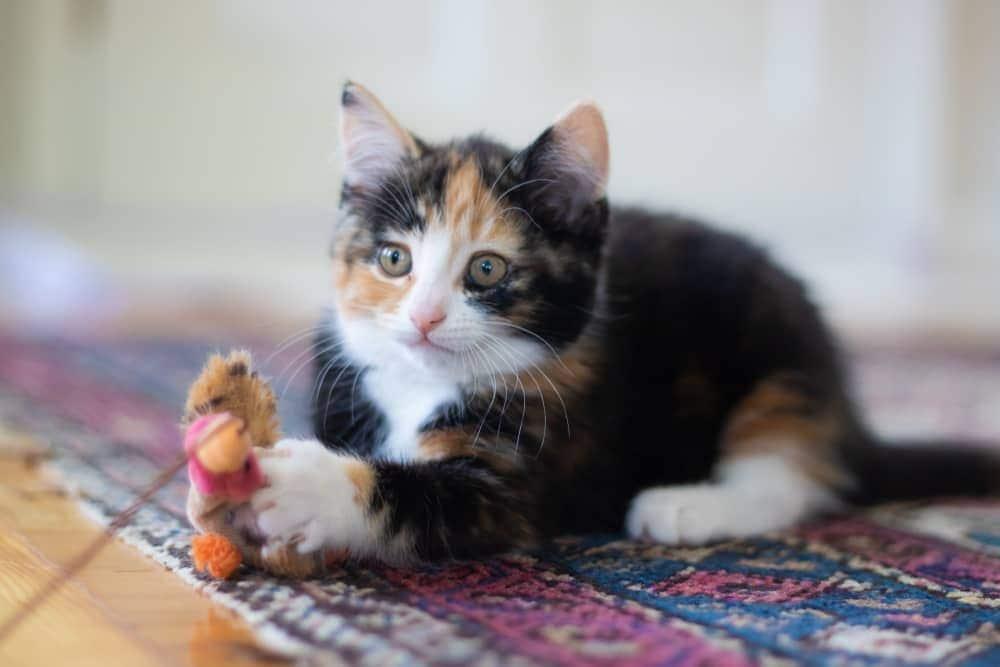
1. Hunting prey
Pet cats retain the innate hunting instincts of their ancestor, the African wild cat, which is why a seemingly sleepy kitty may suddenly pounce on your foot or zoom after a duster. That means that hunting games are among the best types of games to play with your cat. One way to indulge their inner predator is by playing hide-and-seek with a stuffed animal. Hide behind a wall or piece of furniture and make the plush critter "peek" around the corner, and then wiggle it a few times. You also can launch it across the room to make it look like it's running. They'll love charging after it! Amp up this activity by using a stuffed animal that is larger than their usual cat toys so they have the added satisfaction of taking down substantial prey.
2. Mechanical toys
Another fun way to play with cats is to use wind-up or battery-operated toys, especially those designed to look like small rodents. Your cat is attracted to the unpredictable movement of these toys as they zigzag across the floor (hard surfaces work best). The exercise gives them an outlet for their stalking and pouncing skills and keeps them away from your feet. Placing obstacles in the toy's pathway increases its erratic movement, making it even more entertaining for your cat.
3. Cat food puzzles
Cats love the excitement of a mental challenge and a tasty tidbit, so why not combine the two? Feline behaviour researchers explain that food puzzles provide both physical exercise and mental stimulation. Keeping your kitty's mind sharp is important for keeping them happy and engaged and the physical exercise helps to stave off weight gain. This activity is also easy on the budget; you can repurpose items in your home, such as a cardboard box and dry cat food, for a DIY cat puzzle.
4. Cat obstacle course
While it's true that cats are creatures of habit, they're also curious and enjoy investigating enticing, non-threatening changes to their environment. For that reason, obstacle courses can be one of the most fun things to do with cats.
Construct a maze-like structure by placing cushions and pillows around the room. You can include chairs that offer a high perch for jumping, too. The best way to keep your cat interested in this new set-up is to plant pieces of cat food at various points throughout the maze.
5. Cat apps
It may come as no surprise that many new cat trends incorporate electronic technology. Did you know that there are apps that your cat can play with by themselves? Now, your cat can catch fish, paint or chase lasers on a screen, according to Petplan. You will need to operate the smartphone, of course. If you've ever caught your cat watching television, you know they are enchanted by the quick movements and vibrant sounds of electronic devices. Be sure to keep th screen brightness as low as possible to prevent damaging your pet's eyes.


Tasty Tips
6. Catnip playtime
Catnip is a natural herb that can give cats a sense of extreme happiness and euphoria. Although all cats react differently, many cats will respond to catnip by doing things like rolling around on the floor, rubbing themselves against the furniture, or zooming around the room, before dropping into a deeply relaxed state. You can incorporate this cat favourite into playtime with special toys designed to hold catnip, or by using it as a reward for training activities, or even just as a special treat.
7. Box play
For all the fancy cat toys you buy them, sometimes a cat loves nothing more than a good cardboard box! An empty box lets your cat indulge their natural instinct to hide and observe, and they can also serve as platforms for your cats to climb and jump from. Try putting some empty boxes of various sizes together or creating tunnels and towers to make a low-cost but enriching cat kingdom.
8. Bird watching station
As natural predators, being able to observe prey is important for a cat’s mental stimulation and wellbeing. For indoor cats in particular, a bird watching station can help them to feel connected to their roots, while keeping our feathered friends safe! Find a cosy window spot for your cat with an unobstructed view of the outdoors, and then place bird feeders or fountains outside to attract birds for your cat to watch.
9. Interactive laser pointer games
If you’ve ever shone a laser pointer on the floor and watched your cat instantly go into predator mode, you’ll know that this cheap toy is a great way to stimulate your cat’s hunting instinct. Just be sure to use a low-strength pointer and keep it away from your cat’s eyes. More importantly, be sure to let them have some hunting ‘success’ by intermittently tossing a treat on the floor that the pointer lands on for them to ‘catch’ and consume. You can also use toys that will give your cat the opportunity to bite and ‘kill’ the prey. If you only ever play using the pointer alone, they could become frustrated. Letting them experience the full hunting sequence keeps this activity fun for cats.
10. High perches and shelves
In the wild, observing from a high spot lets your cat assess their surroundings, scan for prey, and watch for threats. In your home, you might have noticed your cat behaving in a similar way. Even though they’re unlikely to face threats in their home, it makes them feel instinctively safe and in control of their environment. Provide them with lots of perches, shelves, cat towers, boxes and other places where they can indulge in this natural behaviour. Cats are naturally curious and moving things around occasionally will give them the opportunity to experience ‘new’ high vantage points.
Trying out new games to play with your cat benefits your fur baby physically and mentally. Get creative, and kitty bonding time will never be the same.
Frequently asked questions about games to play with your cat
Why is it important for cats to "catch" something during playtime with laser pointers?
The urge to hunt prey is very strong in cats, and the end “catch” is how that urge is ultimately satisfied. If your cat never “catches” the laser dot, they’re left feeling frustrated and unsatisfied by the game. So always make sure your feline friend comes away from a game of laser pointer with a few victories!
What are the benefits of using puzzle toys and foraging activities for cats?
Toys that encourage cats to use problem-solving skills are mentally stimulating and very rewarding for cats. These types of activities also discourage over eating while increasing exercise which are both important strategies for preventing cats from becoming overweight.
How can I provide safe outdoor experiences for my indoor cat?
Whether indoors or outdoors, your cat will want to run, chase, climb, jump and hide. So if you want to create a great outdoor environment, make sure it’s full of opportunities to indulge these natural instincts. To keep your indoor cat safe, make sure that your garden is secure so that your cat can’t get out and other animals can’t get inside, and make sure your cat is microchipped so you can always find them if they somehow manage to escape..


Christine O'Brien is a writer, mom, and long-time cat parent whose two Russian Blues rule the house. Her work also appears in Care.com, What to Expect, and Fit Pregnancy, where she writes about pets, pregnancy, and family life. Find and follow her on Instagram and Twitter @brovelliobrien.
Related products

Hill's Science Plan Sensitive Stomach & Skin Adult Wet Cat Food with Turkey is a complete pet food for adult cats, aged 1–6 years. This highly digestible wet food comes in a pouch and supports healthy digestion, as well as nourishes skin and promotes a thick and lustrous coat.
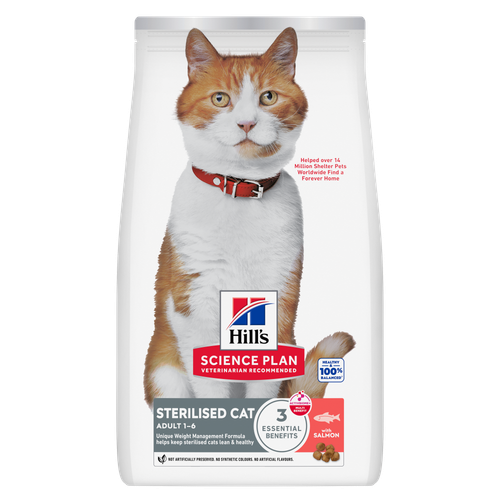
Hill's Science Plan Adult Sterilised Cat Dry Food with Salmon is specially formulated with ActivBiome+ Multi-Benefit Technology. It is a precisely balanced nutrition, tailored to meet the needs of sterilised cats, to help keep them lean & healthy.
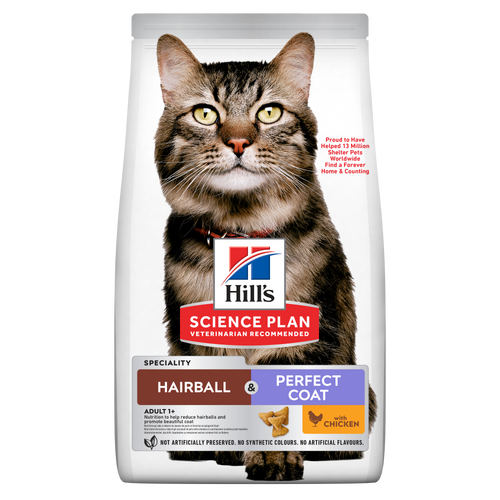
Hill's Science Plan Hairball & Perfect Coat Adult Cat Food with Chicken is formulated to effectively help avoid hairball formation in adult cats while promoting a beautiful coat. Thanks to its mix of essential omega-6 fatty acids, this food benefits the cat's skin and fur, keeping them healthy and shiny. Our Advanced Fibre Technology helps reduce hairballs by naturally promoting their passage through the gut. This food is formulated with high-quality protein for a perfectly balanced, great-tasting recipe.
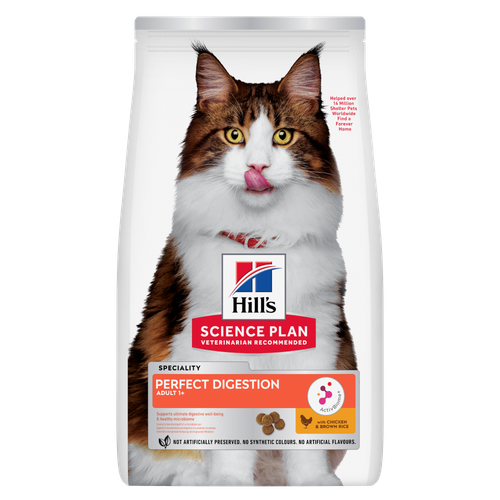
Hill's Science Plan Perfect Digestion Cat Food with Chicken & Brown Rice nourishes your cat's unique microbiome and helps them reach their full potential.
Related articles
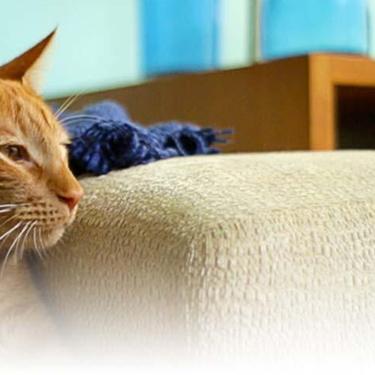
Find the right Hill

Find out about how you can support your cat's digestion to boost overall health. Diet is key to a long and happy life for your cat, so discover what you can do.
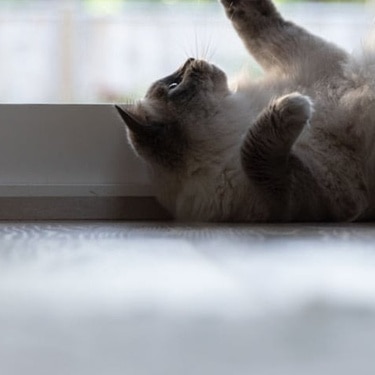
Feeding time can be a wonderful bonding opportunity for you and your cat. Find out how to make the most of it and create a healthy habit with HIll's Pet UK.
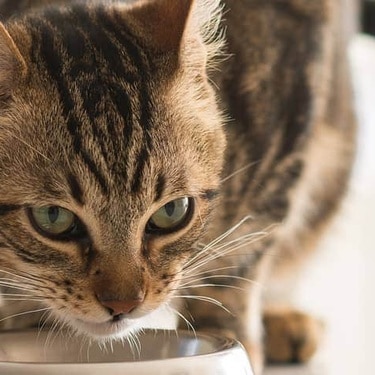
Discover what you can do to spot and support a sensitive cat stomach. See what routines and food you can implement to help your cat be happy and healthy.
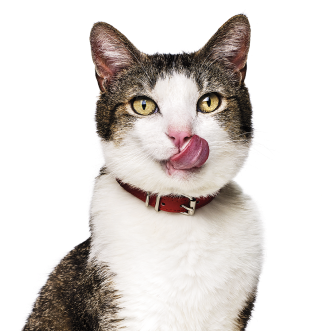
Put your cat on a diet without them knowing
Our low calorie formula helps you control your cat's weight. It's packed with high-quality protein for building lean muscles, and made with purposeful ingredients for a flavourful, nutritious meal. Clinically proven antioxidants, Vitamin C+E, help promote a healthy immune system.
Put your cat on a diet without them knowing
Our low calorie formula helps you control your cat's weight. It's packed with high-quality protein for building lean muscles, and made with purposeful ingredients for a flavourful, nutritious meal. Clinically proven antioxidants, Vitamin C+E, help promote a healthy immune system.


